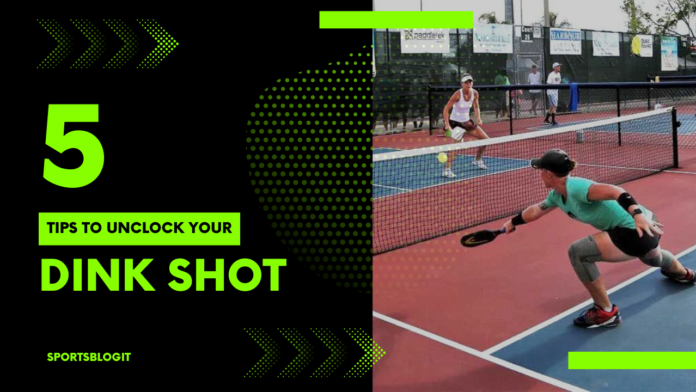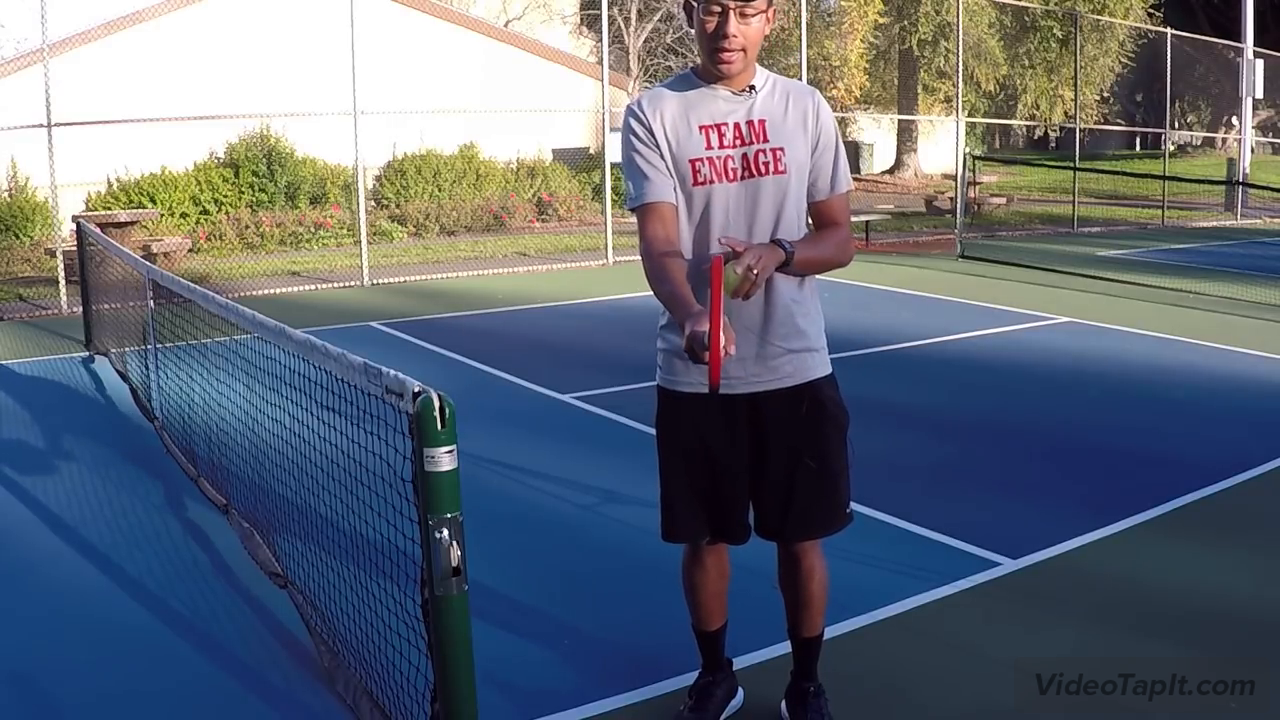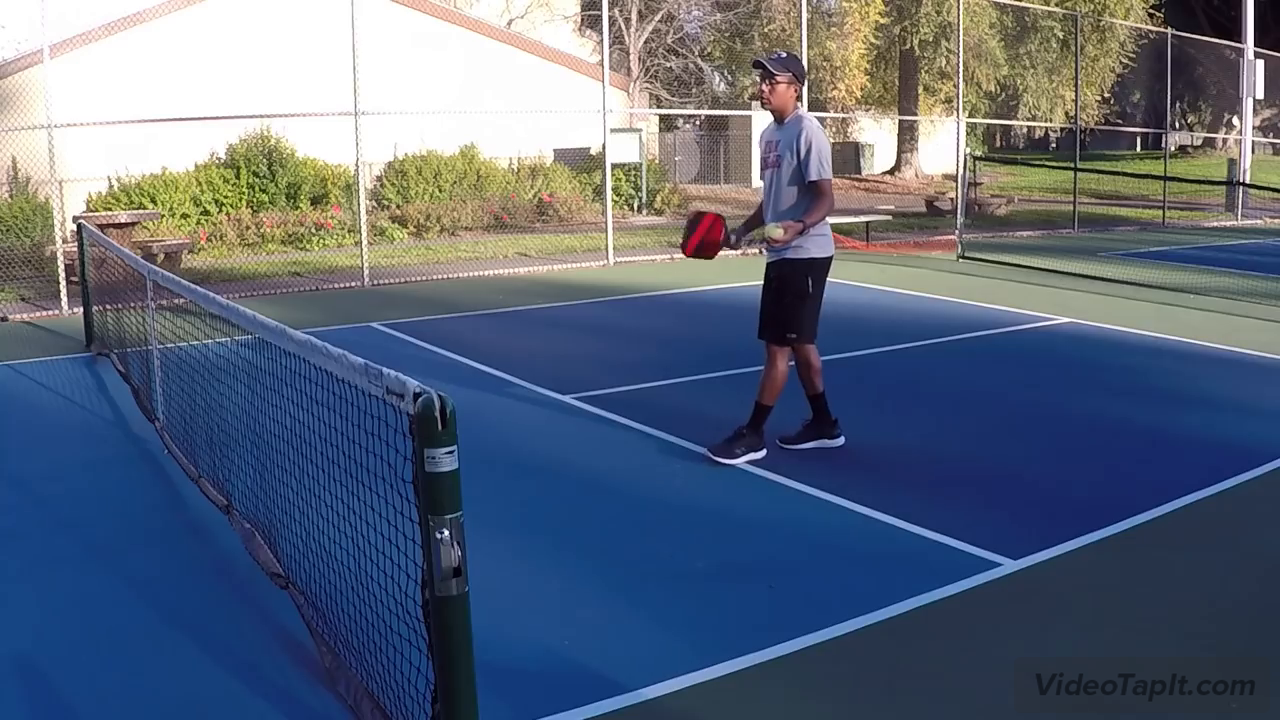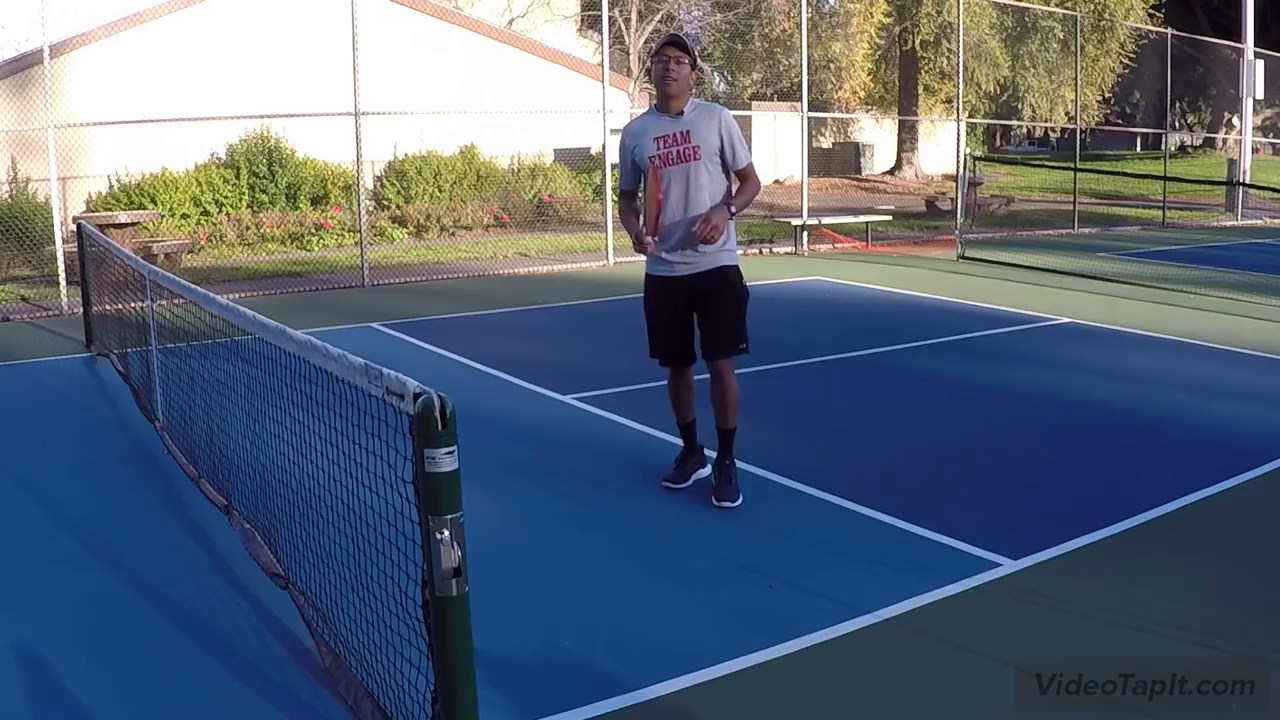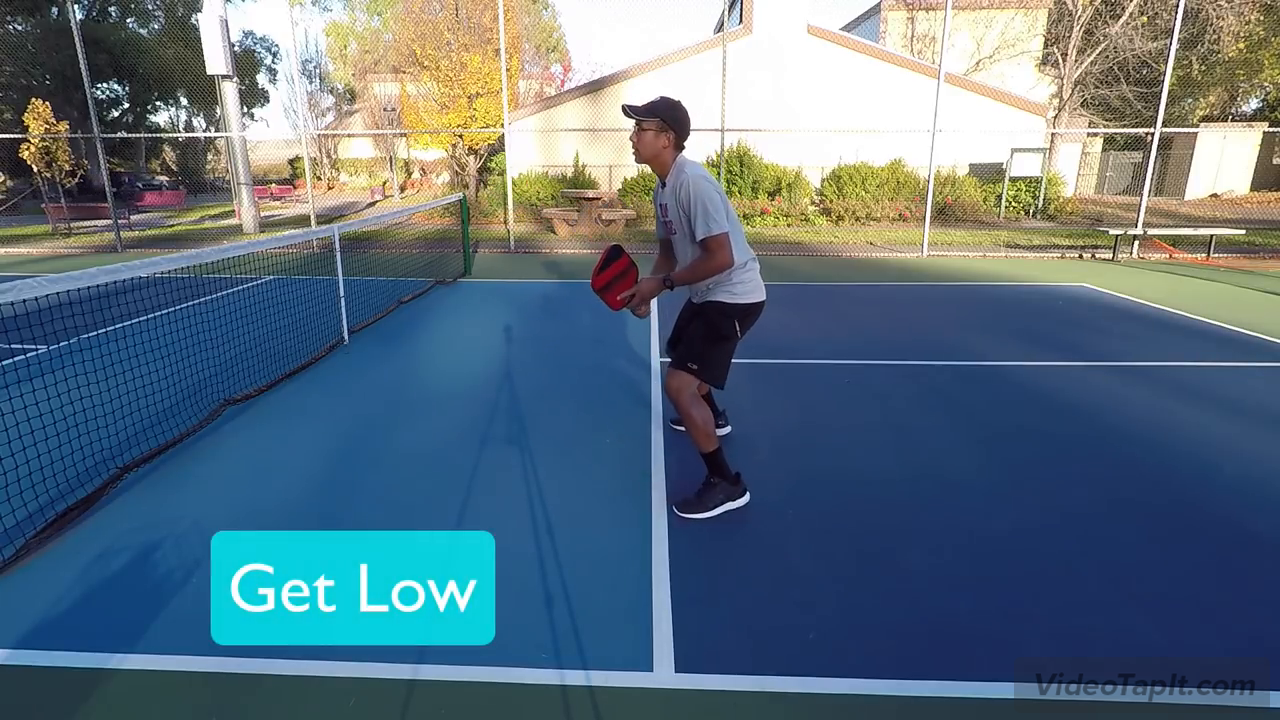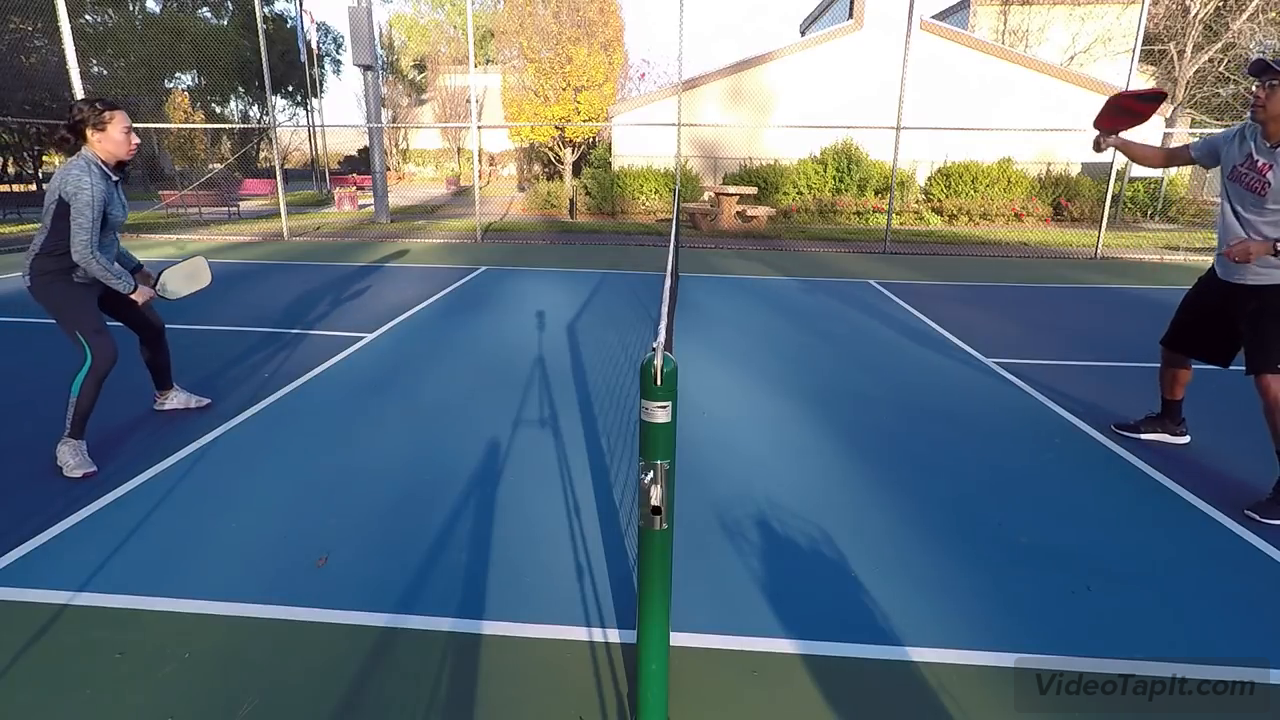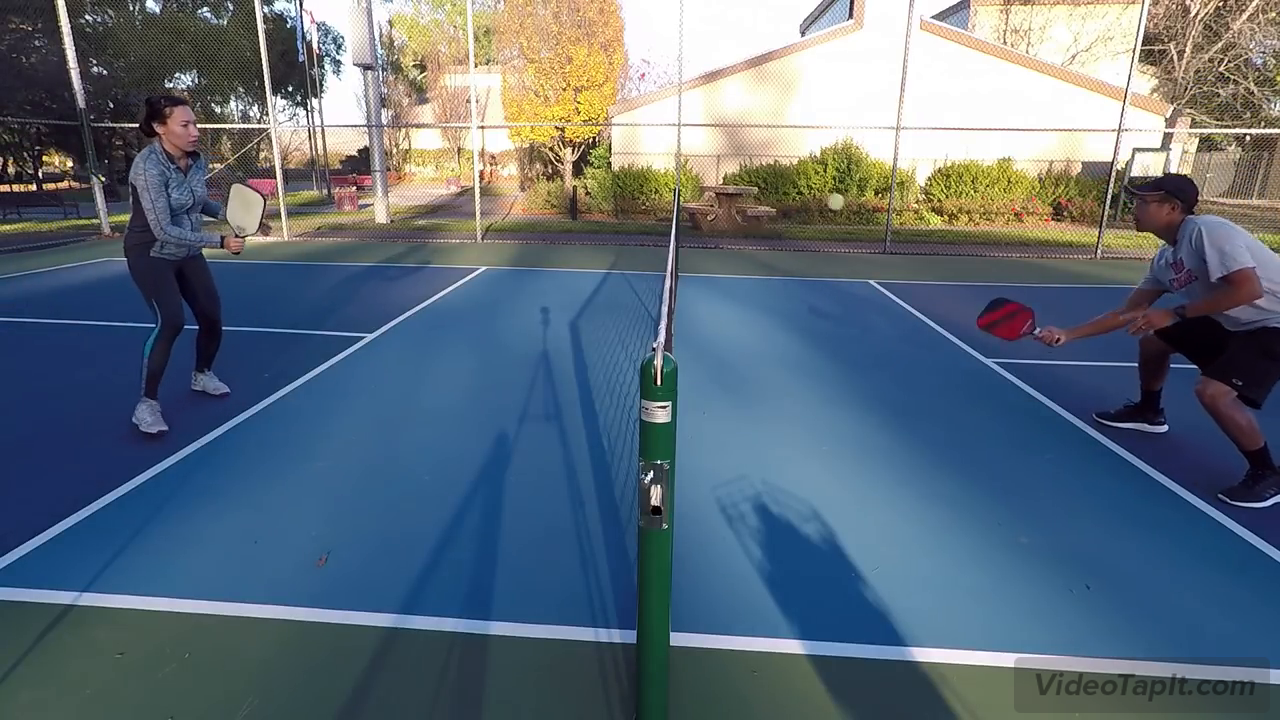Hitting a dink shot in Pickleball can be one of the hardest skills to learn. However, in this blog post we outline 5 tips to help you unlock your inner dinking skills.
5 Tips to perform a dink shot in pickleball
- Use a continental grip.
- Keep your swing on a tight path.
- Keep your hands out in front of your body.
- Bend your knees and get low.
- Keep your eye on the ball at all times.
The first key to having a very successful Dink is the grip. Let’s just start with the basics. I tell most people and encourage them to use the continental grip. This is the grip. If you were just to put the paddle out like this and you’re shaking someone’s hand and you’re holding it straight out this edge guard right here, which directly faces the ground.
It’s very useful because when you’re dinking, you can hit a forehand or a backhand dink on both sides without changing your grip. That’s really important. Pick a ball to try to find a grip you could use that you’re not going to change so that you can get to each ball because it can turn from slow to fast really quickly. That’s why it’s really good to have a grip that you can use for both forehand and backhand. Yeah, the continental grip is a great one. Remember to always keep the grip because you don’t want to end up as a pickleball meme.
The importance of a compact swing path
Alright guys, so the second key to having a successful Dink is the swing path of your stroke, of the Dink stroke. Let’s get Dinking here and I’m going to talk a little bit about the swing path. Here we go. I want you guys to notice here just my jinx in general, OK? Just take a look out real quick and tell me what you guys see and then I’ll explain a little bit.
To have a successful Dink, you really want to be really consistent in your stroke. As you can see, my paddle is never going to come behind my body, okay? that’s where a lot of players get in trouble and they pop up balls when they take their paddle behind their body because it’s harder to time it because you always want to hit that ball in front of your body, that contact point when the ball hits your paddle in front. When you see me start my Dinks, it’s always in front of my body. It’s not a large backswing right here or right here.
It’s a very short backswing. Then I end with a short follow-through. It’s very compact. It’s from here to here or here to here. Let’s think a little bit more.
Start in Front of My Body Good Back Hands All
Here we go. So I start in front of my body. Good backhands. All right.
Use your legs to get low
The third key to a successful dink is using your legs. This is one of the most important parts of a dink. For a lot of people who don’t have a lot of experience in other racquet sports, I see them doing this a lot.
When the ball gets low, they’re kind of just bending at their back, right? their legs are stiff and straight. obviously, if you like, hit me a wide dink over here. It’s just hard to move like that and get to the ball.
You really want to use your legs and dinking. When I say that you really want to get low, you want to get low. Your knees are bent, and your back is straight, so you’re using your legs to get low to the ball. when I’m thinking here, I’m actually using my legs and getting into a position low with my legs.
Also moving my feet. I’m not. The main thing is I’m not standing straight up.
Let’s hit a few more dinks here. Low to the bowl. The contact point is out in front and my backswing and my follow-through are not long. It’s very short and compact.
Really staying low, using my legs. Using my legs to lift up the ball. Lifting up the ball with my legs.
Alright, guys. The fourth key to having a successful dink is clearing the net. Obviously, you don’t want to be hitting the net, respect the net. You know, you really want to make sure you give a margin of error over the net as you’re dinking. A lot of people think that you need to keep your dinks really, really close to the net so that your opponent can attack the ball, okay?
How to Dink Successfully: The Fifth Key
That it’s not high so that they could attack it and hit it down. Really, it’s not about the height, okay? It’s really about depth. That’s actually the fifth key to having a successful dink. The fourth would be you really want to give a margin of error on your dinks.
As you can see, when I’m drinking, I’m giving at least, you know, a foot and a half somewhere in between thereof margin so I’m not making errors. Then the fifth one would be making sure your dinks are not landing past this non-volley zone. Because when we’re dinking here and then if the ball comes past the non-volley zone, I could pretty much speed it up. Let’s think a little bit here and then send me a ball a little bit past a non-volley zone.
So It’s really key that you give that margin of error when you are dinking over the net here and also that your dinks are actually falling short and not beyond the non-volley line. It’s always good to work on hitting the ball in front of your opponent’s feet right around here so that they can’t hit the ball down as a volley.
Bending at the Knees
Good. That one was a little close, so I want to give a little bit more margin. Your contact point is always out in front. My backswing is short, and my follow-through is very compact. I’m getting really low to the ball. Alright.
Keep your eye on the pickleball at all times
There are five keys to having a very successful dink. But most importantly no matter what you are doing to keep your eye on the ball at all times!


